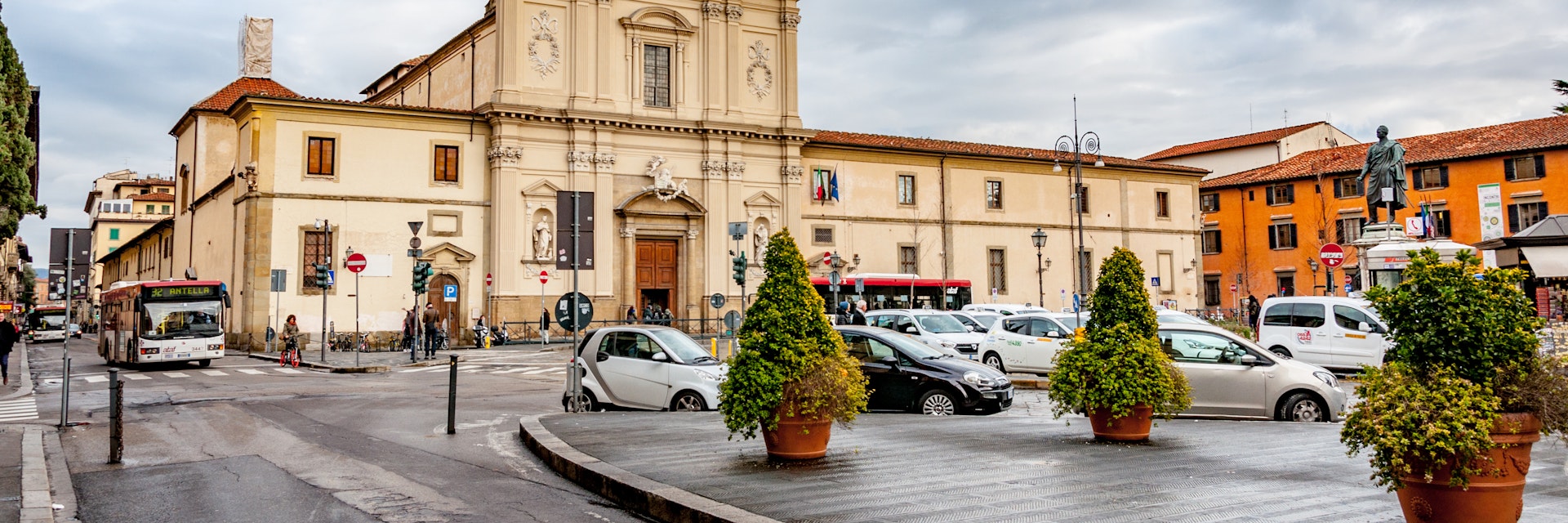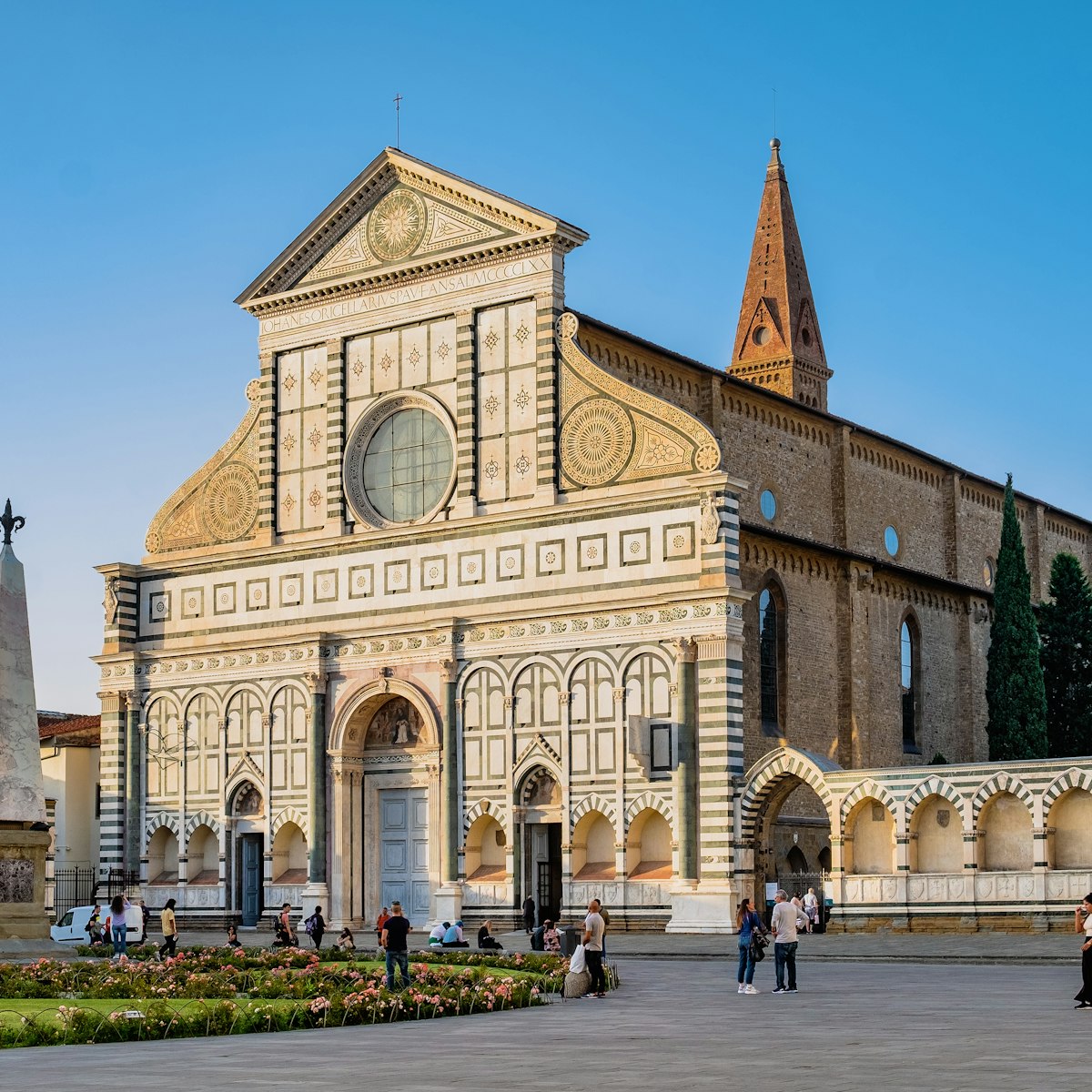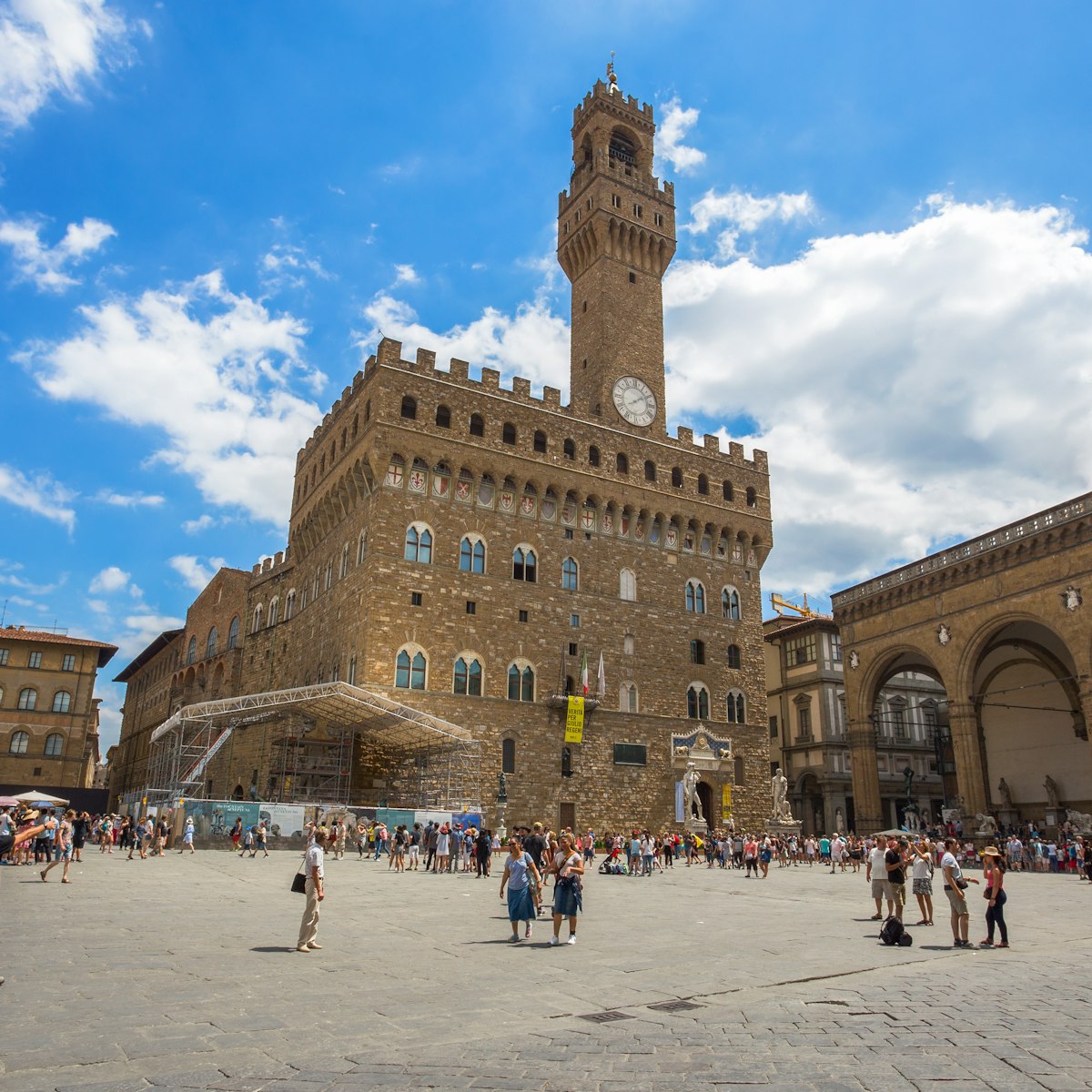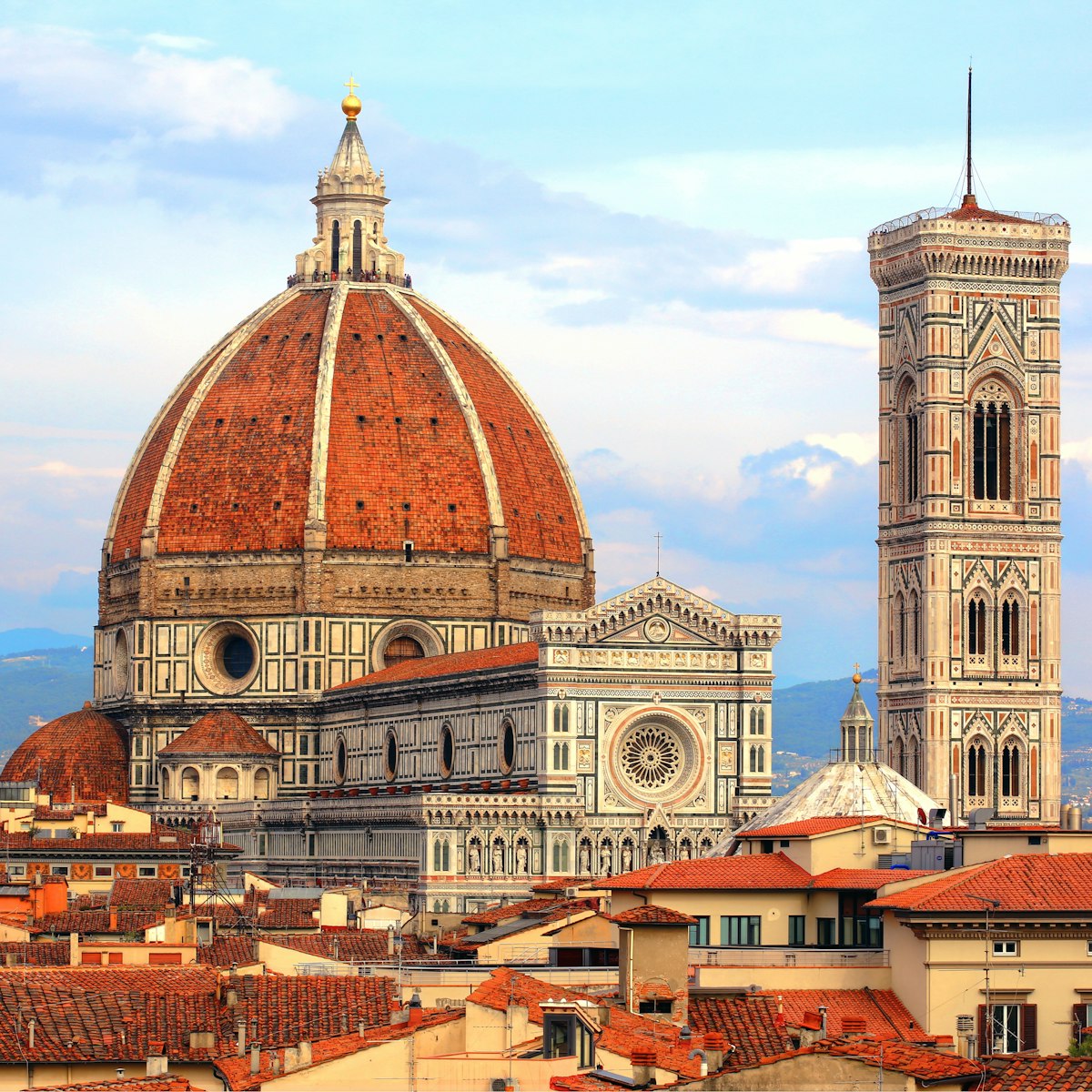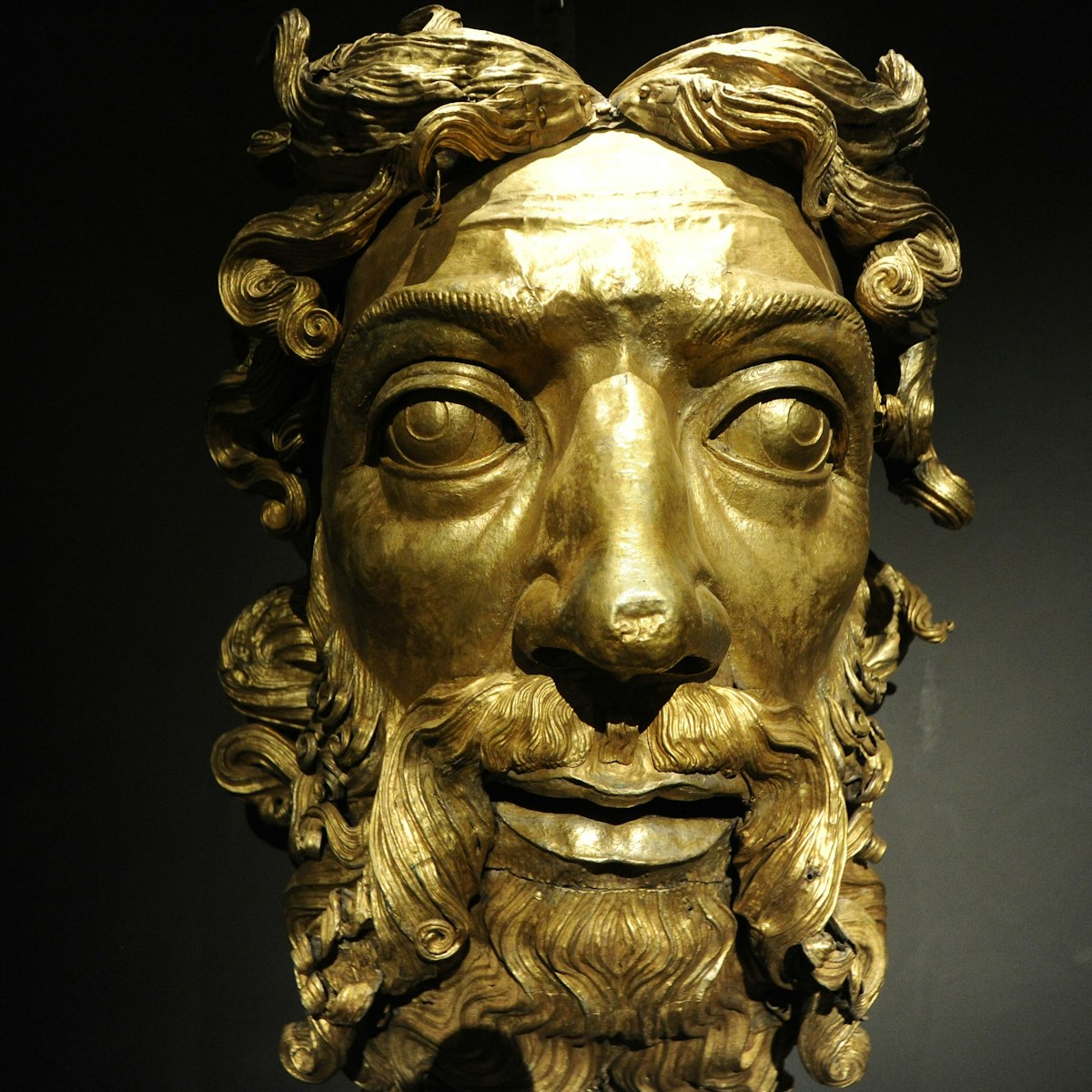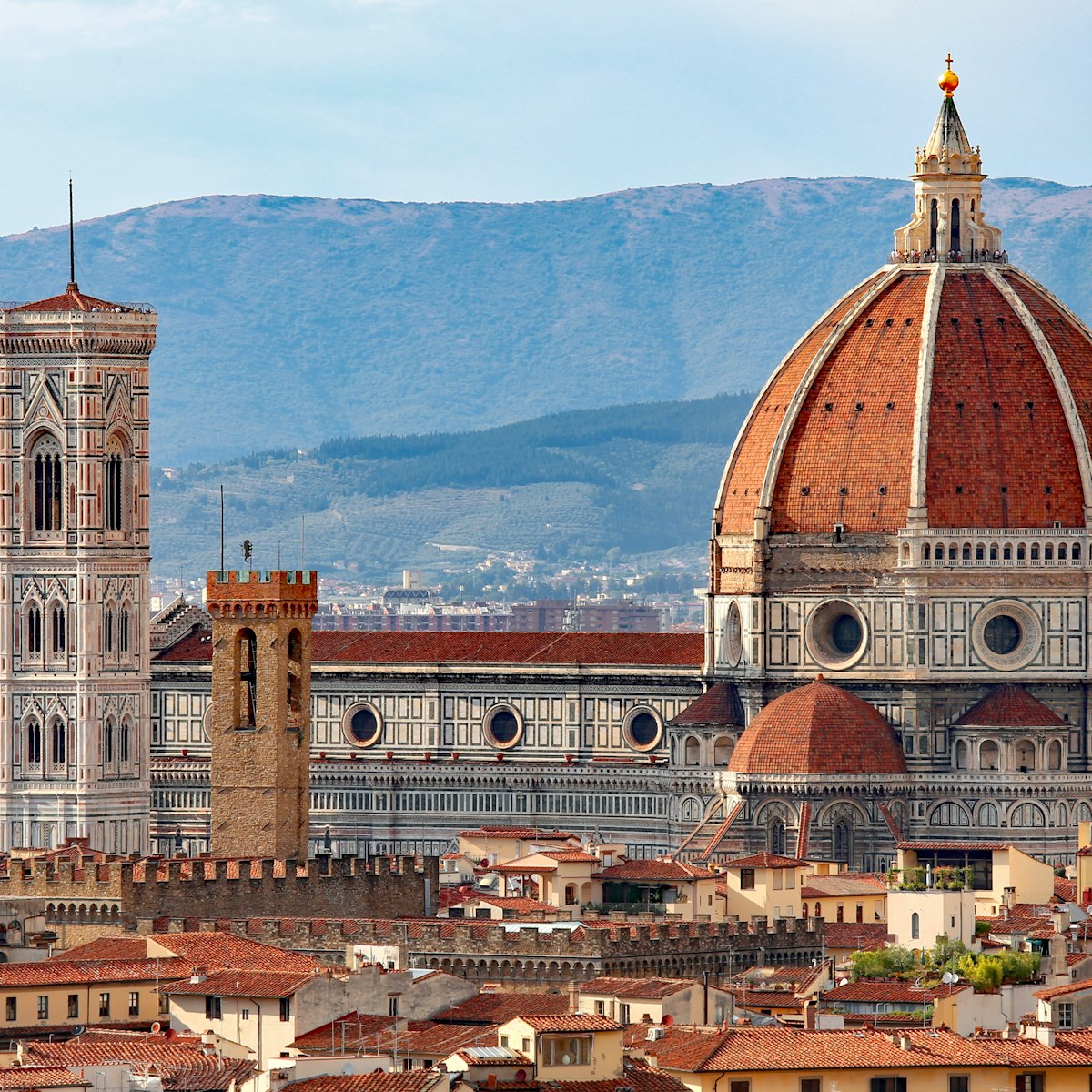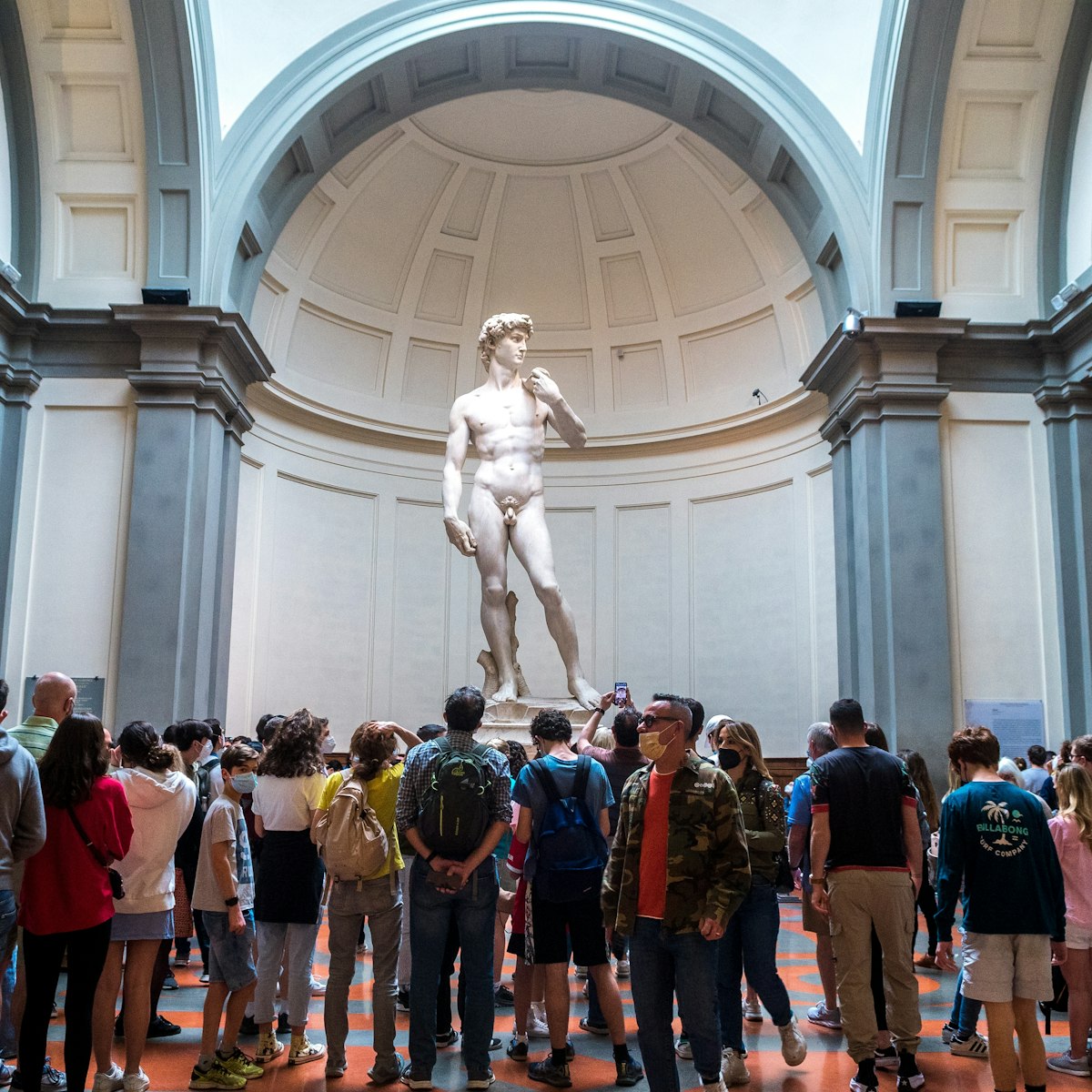At the heart of Florence's university area sits Chiesa di San Marco and an adjoining 15th-century Dominican monastery where both gifted painter Fra' Angelico (c 1395–1455) and the sharp-tongued Savonarola piously served God. Today the monastery, aka one of Florence's most spiritually uplifting museums, showcases the work of Fra' Angelico. After centuries of being known as 'Il Beato Angelico' (literally 'The Blessed Angelic One') or simply 'Il Beato' (The Blessed), the Renaissance's most blessed religious painter was made a saint by Pope John Paul II in 1984.
Enter via Michelozzo's Chiostro di Sant' Antonio (St Antoninus Cloister; 1440). Turn immediately right to enter the Sala dell'Ospizio dei Pellegrini (Pilgrims' Hospital Hall) where Fra' Angelico's attention to perspective and the realistic portrayal of nature come to life in a number of major paintings, including the Deposition from the Cross (1432).
Giovanni Antonio Sogliani's fresco The Miraculous Supper of St Dominic (1536) dominates the former monks' Refettorio (Refectory) in the cloister. Fra' Angelico's huge Crucifixion and Saints fresco (1441–42), featuring all the patron saints of the convent and city, plus the Medici family who commissioned the fresco, decorates the former Capitolo (Chapterhouse). But it is the 44 monastic cells on the 1st floor that are the most haunting: at the top of the stairs, Fra' Angelico's most famous work, Annunciation (c 1440), commands all eyes.
A stroll around each of the cells reveals snippets of many more religious reliefs by the Tuscan-born friar, who decorated the cells between 1440 and 1441 with deeply devotional frescoes to guide the meditation of his fellow friars. Most were completed by Fra' Angelico himself, with others by aides under his supervision, including Benozzo Gozzoli. Among several masterpieces is the magnificent Adoration of the Magi in the cell used by Cosimo the Elder as a meditation retreat (Nos 38 to 39); only 10 people can visit at a time. The frescoes in the cell of San Antonino Arcivescovo (neighbouring Fra' Angelico's Annunication) are gruesome: they show Jesus pushing open the door of his sepulchre, squashing a nasty-looking devil in the process.
Contrasting with the pure beauty of these frescoes are the plain rooms (Cell VI) that Savonarola called home from 1489. Rising to the position of prior at the Dominican convent, it was from here that the fanatical monk railed against luxury, greed and corruption of the clergy. Kept as a kind of shrine to the turbulent priest, the three small rooms house a portrait, a few personal items, fragments of the black cape and white tunic Savonarola wore, his rosary beads and the linen banner he carried in processions, and a grand marble monument erected by admirers in 1873.
